Day 11 saw us back in a similar area as day 6, our whale watchers’ dream day (see Island Hopping in the Tropics – Part 2), but the days could not have been more different in terms of sightings. With a northeasterly force 4, weather conditions were reasonably favourable for picking out cetaceans, but there was very little seen. Even the seabirds seemed to have disappeared with just a handful of large shearwaters and storm petrels seen! We had to wait until 5pm for our first and only cetacean sighting of the day when a very large bull Sperm Whale surfaced close to the ship. He showed well as he re-oxygenated at the surface with the photographs showing him to probably have a twisted spine or bone deformity – maybe a birth deformity? This is something I have seen with large whales in the past and has been recorded in Sperm Whale.
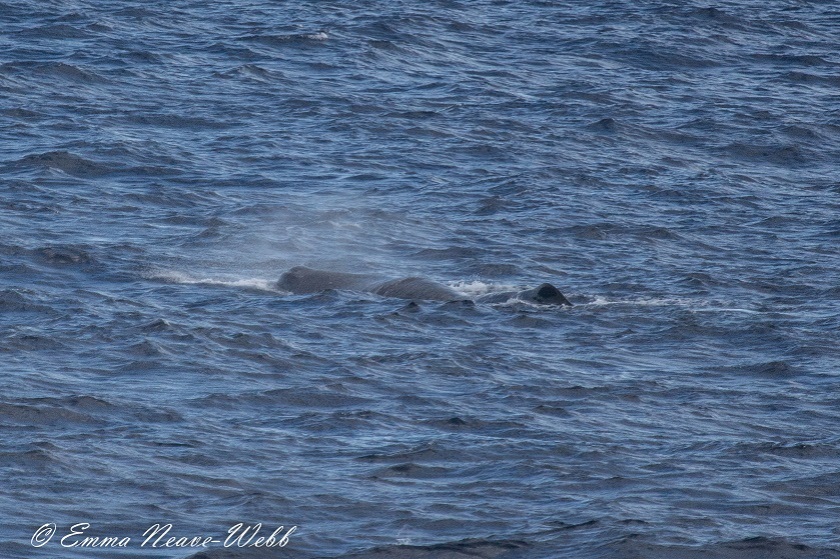
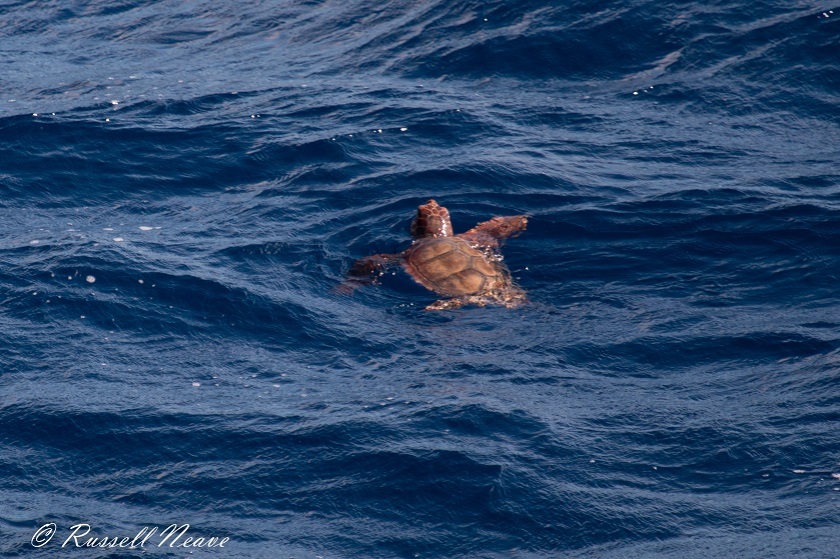
The next day saw Braemar docked in Santa Cruz de Tenerife for the day. With blue skies and very little breeze, it seemed like it had been a good decision to escort the official Fred Olsen whale watching excursion – and it certainly was! A small, but excited band of us travelled down to the tourist town of Playa de las americas at the south of the island to board a catamaran for a few hours of whale watching and relaxing on board. We had hardly left port when I picked up the black, shiny fins of a small pod of Short-finned Pilot Whale ahead of us and a scan around revealed a wide-spread group resting at the surface in various locations. We spent time with one group which had two very small calves with them which could only have been a few days old, they were absolutely tiny! We were treated to some amazing close encounters as the animals got used to us and moved around the vessel. It was an absolute treat to share some time with this small family on a vessel whose Captain knew how to responsibly position the vessel to minimise disturbance – unfortunately, the same can not be said about some of the private vessels in the area.
Research in Tenerife suggests that there are as many as 1,000 Short-Finned Pilot Whales which frequent the water off the South West coast of Tenerife. Out of these, it thought that only about half are resident to the area. During the day (especially the morning) they tend to rest at the surface to recuperate from night-time hunting efforts in shallower, warm water so are fairly easy to find.
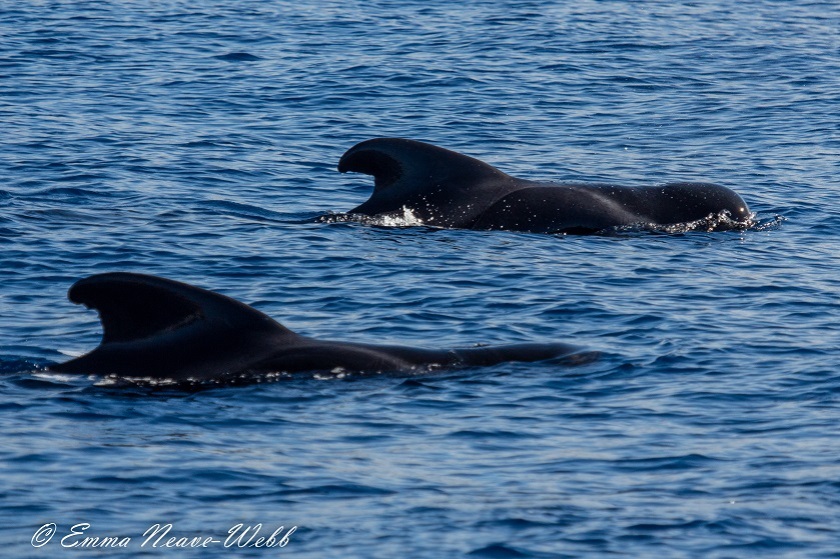
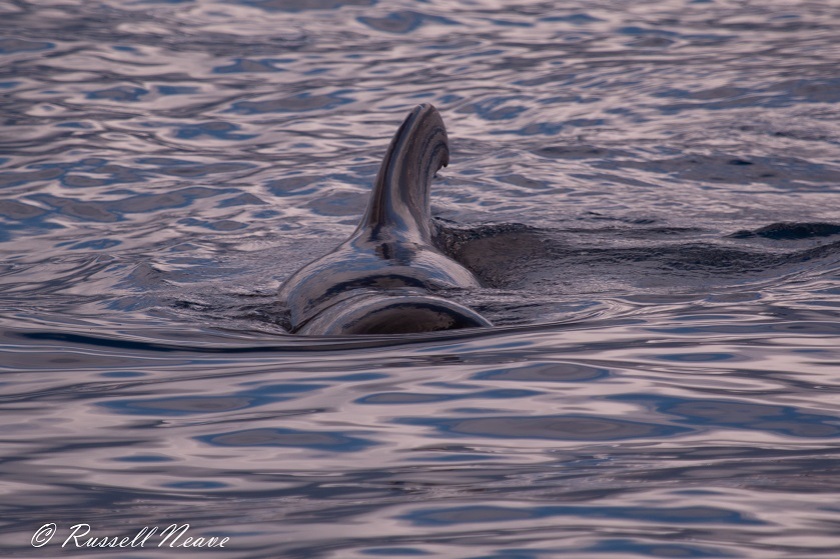
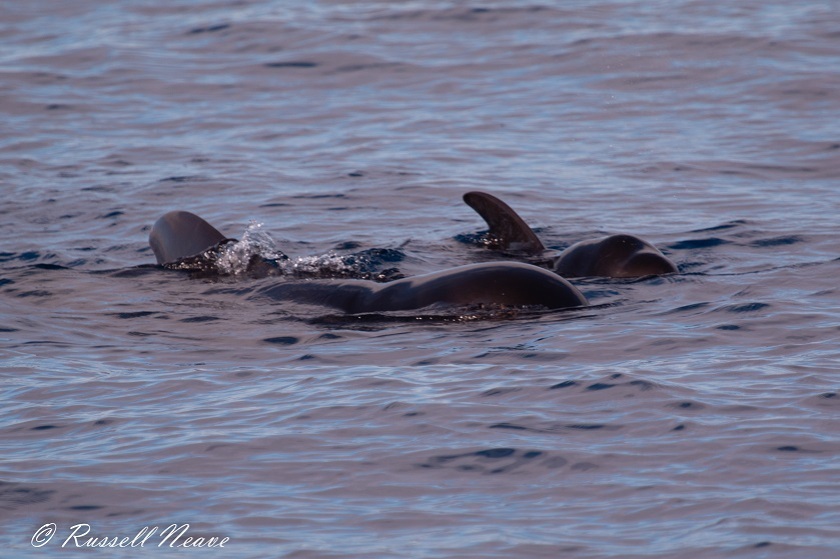
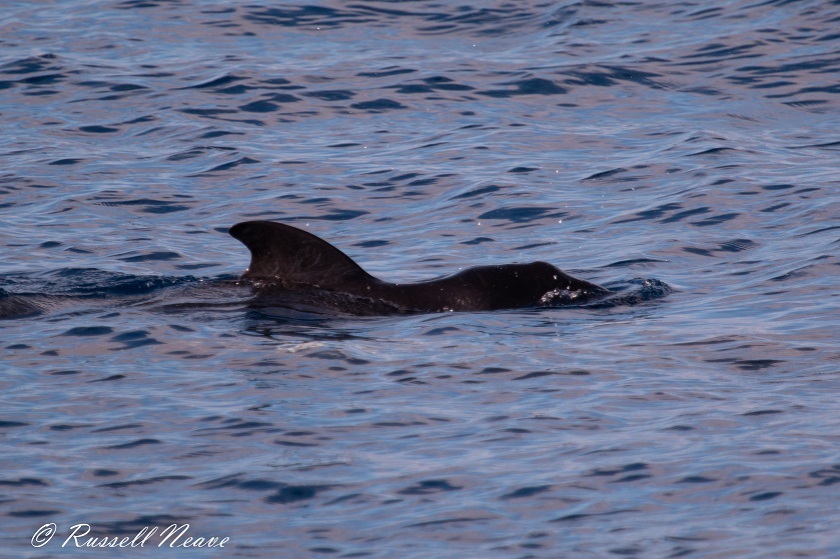
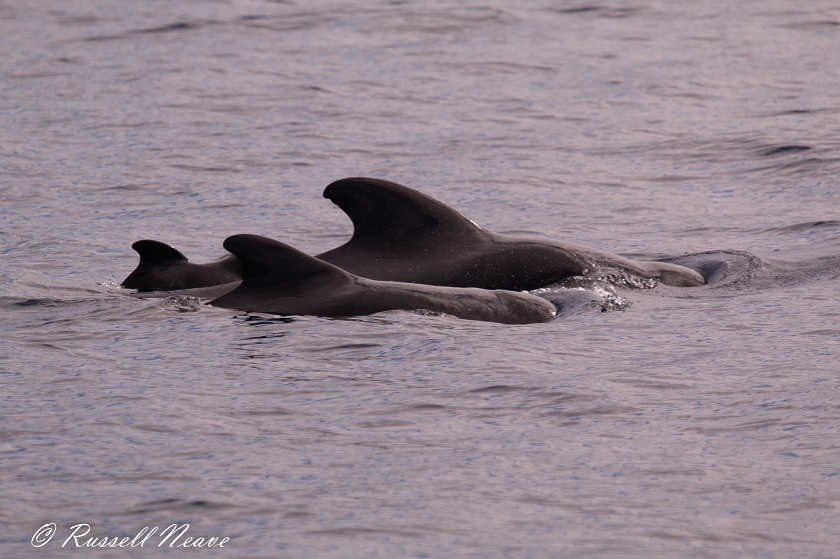
It was very much a different trip for us in Lanzarote away from the normal wildlife watching. As a geologist by training, I was keen to see the Timanfaya National Park so Russ and I headed out on the official excursion. The park itself is a vast volcanic landscape that covers a quarter of the island and was created over six years of near-continuous volcanic eruptions that took place between 1730 and 1736 giving an almost alien landscape. Never ones to ignore the wildlife however, we were delighted to find the endemic Bertholot’s Pipit hopping round our feet as we disembarked the coach at our first stop.
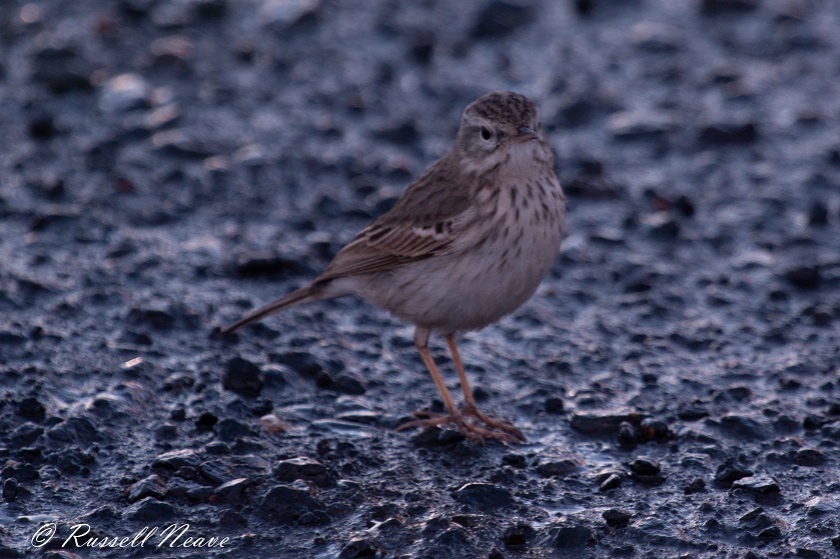
After a fantastic demonstration of the power of the Earth, we were taken on a spectacular 50 minute scenic coach trip around the ‘Ruta de los Volcanes’ – the only way you can see the park – before stopping for the obligatory camel ride (we didn’t!) included in the tour.
We decided to take a closer look at the lava field instead which turned out to be a good decision as we found a small flock of Trumpeter Finch feeding on the ground – a new species for me! An awe-inspiring trip which I highly recommend if you ever visit Lanzarote.
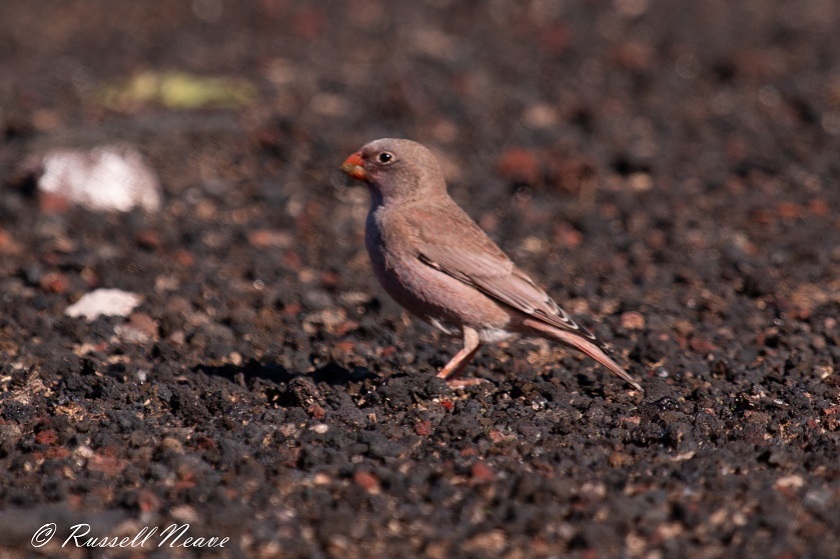
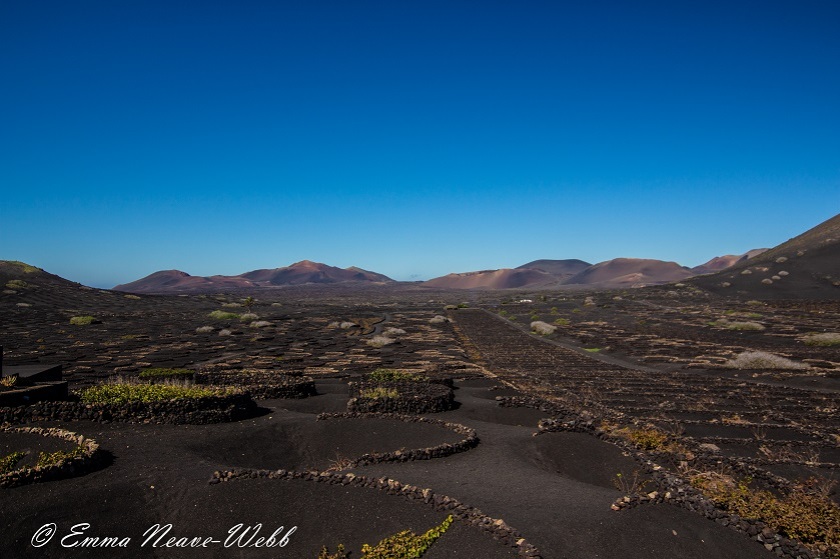
Luckily, we sailed away from Arrecife, Lanzarote at 2pm giving us the whole afternoon over the very nutrient-rich waters of the continental shelf and slope. Whilst passengers were still gathering on the deck following the sail-away party provided by Braemar’s excellent Entertainments Team, we had our first sighting. Alerted by a large flocking of circling and feeding birds, Russ was able to pick out a group of dolphins feeding underneath. As we got closer, more activity was picked up until eventually we were surround by hundreds of Atlantic Spotted Dolphin of which at least 150 animals came in to bow-ride to the delight of the many passengers on deck.
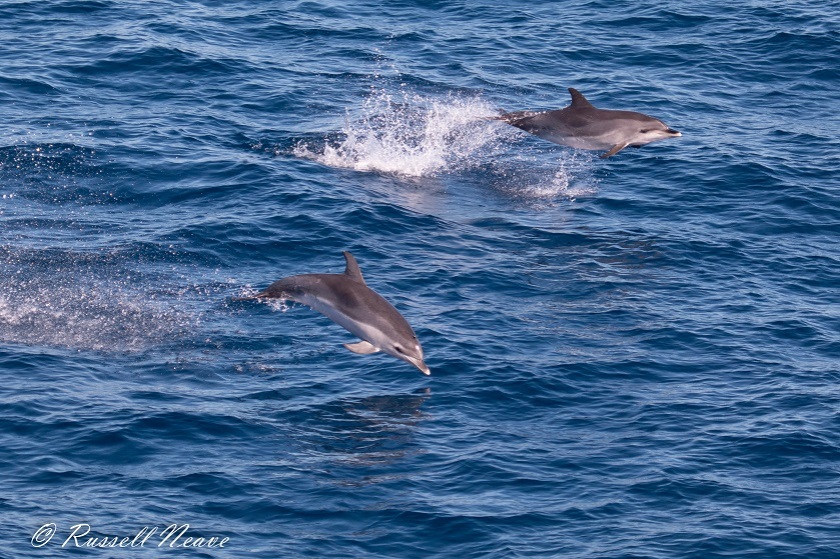
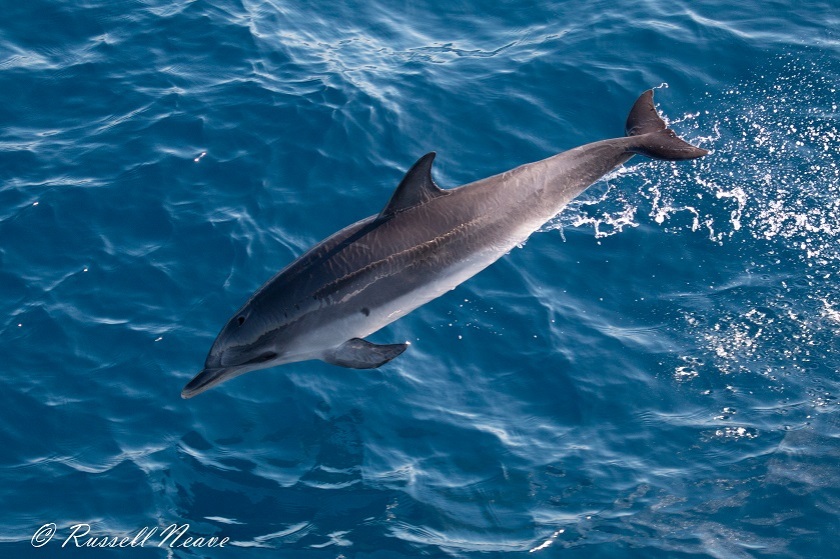
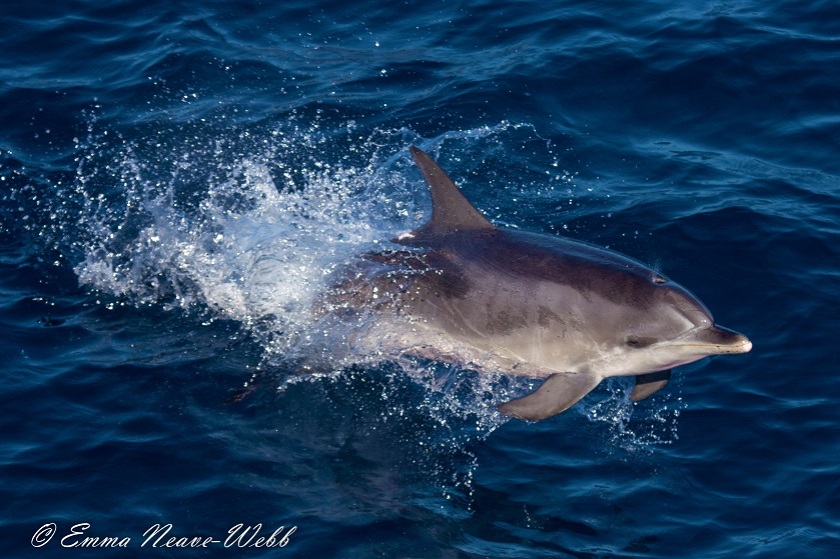
Two more groups of at least 30 Atlantic Spotted Dolphin came into bowride over a 15 minute period before a brief lull in proceedings. However, with sea conditions excellent, we anticipated the next sighting wouldn’t be far away. Suddenly, I picked up a blow well out towards the horizon ahead of us followed by surges of water… they were feeding. Because conditions were so calm, we were able to pick out the bodies of the two animals as well as their distinctive swept back dorsal fin as they sounded for a deeper dive whilst they were still well ahead of us thus confirming Fin Whale. Now it was the waiting game to see how long they would dive for and where they were going to pop back up. Our attention was momentarily taken by a small pod of Short-finned Pilot Whale which quietly snuck down the starboard side before a passenger suddenly shouted… the Fin Whale had resurfaced and were still lunge feeding! This time we were able to make out the indicative white jaw line on the right hand side as one animal surged through the water whilst a second lunged on its side feeding, the tail breaking the surface. Lunge feeding like this is very typical for Fin Whale as well as some of the other larger rorqual whales and can be the cause of mistaken identity as the tail can look confusingly like an Orca dorsal fin!
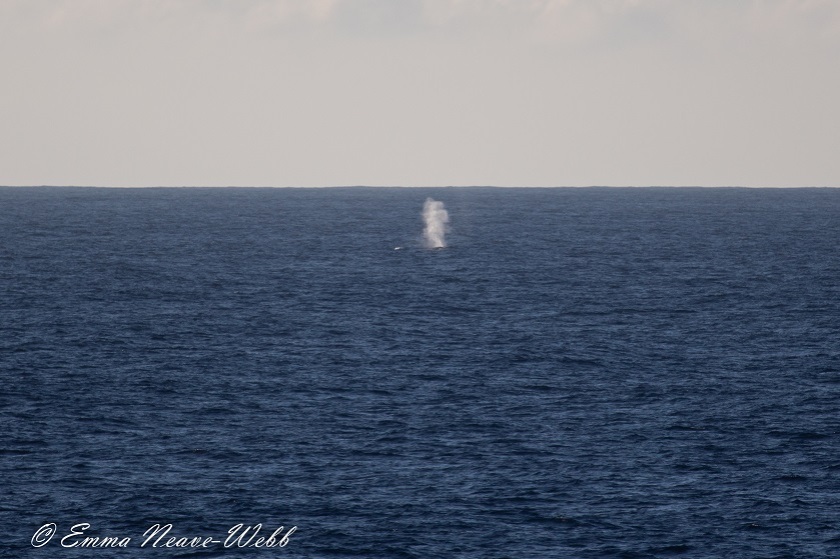
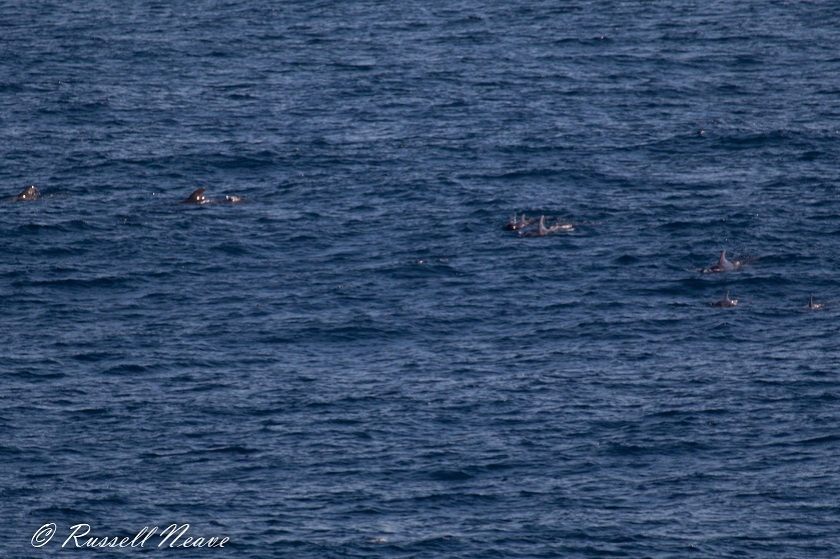
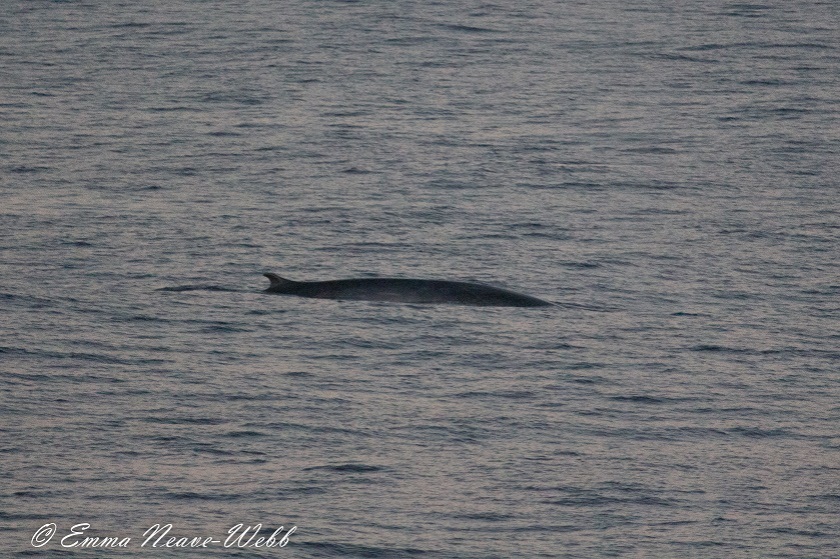
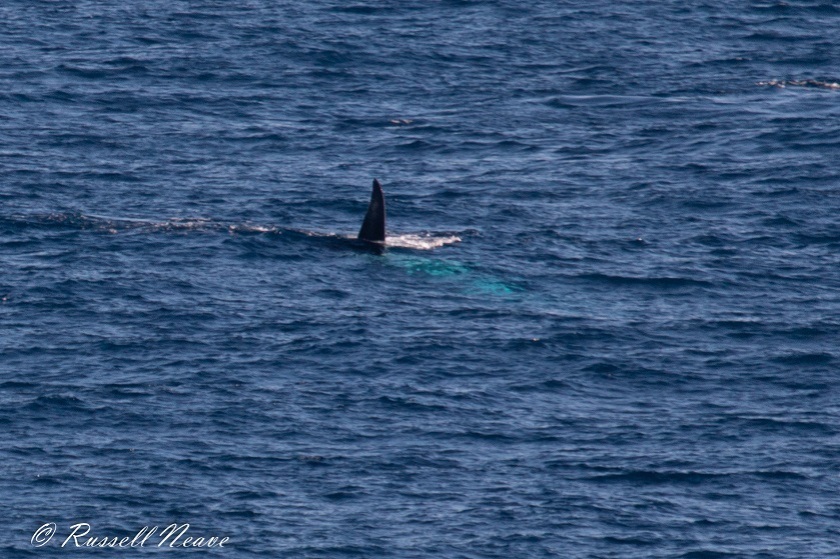
Over the next hour, we were treated to 8 more Fin whale, another active pod of at least 50 Atlantic Spotted Dolphin coming in to bowride and around 50 Striped Dolphin who tried to remain quite, but one animal in particular made some enormous leaps out of the water!
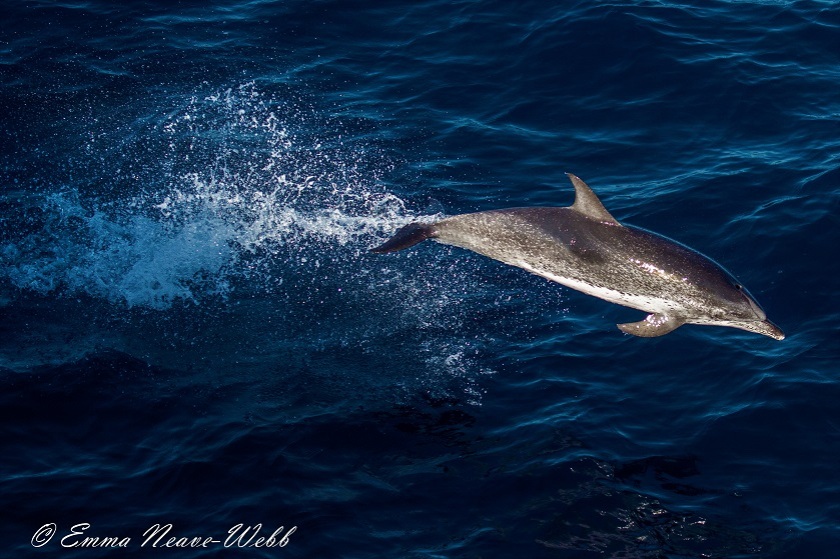
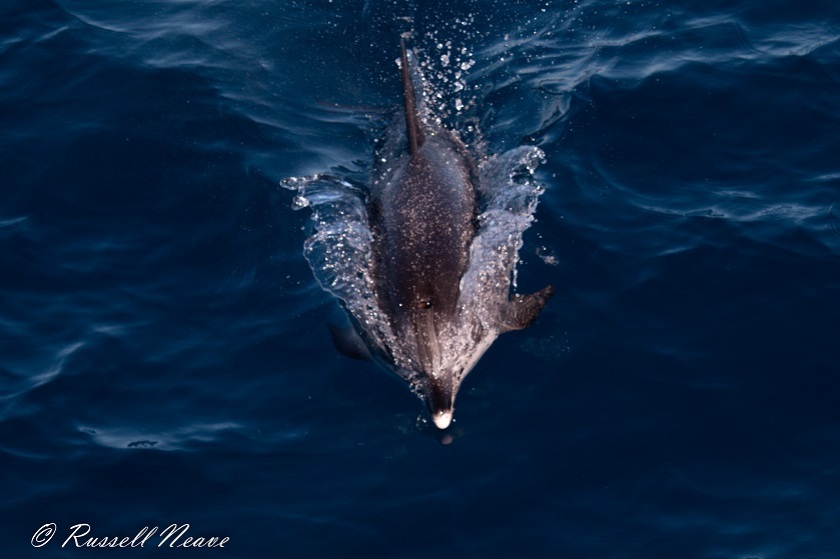
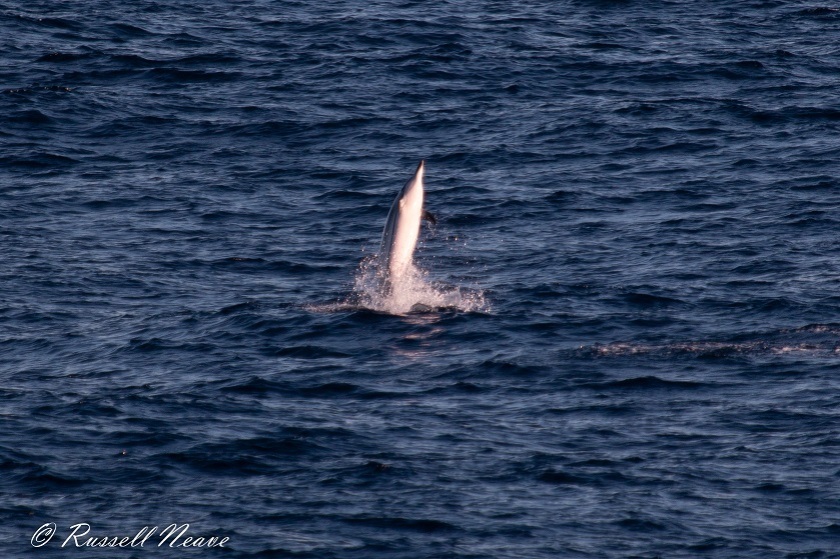
A bit of a lull for an hour before a distant group of 4 Risso’s Dolphin tested Russ and I’s identification skills followed by 2 Fin Whale closer to the ship and a smaller rorqual whale which at the time I called as different. Analysis of the photographs has shown it as likely to be Bryde’s (pronounced Bru-dess) Whale although without seeing the three diagnostic longitudinal ridges on the top of the rostrum, we can’t be 100% certain.
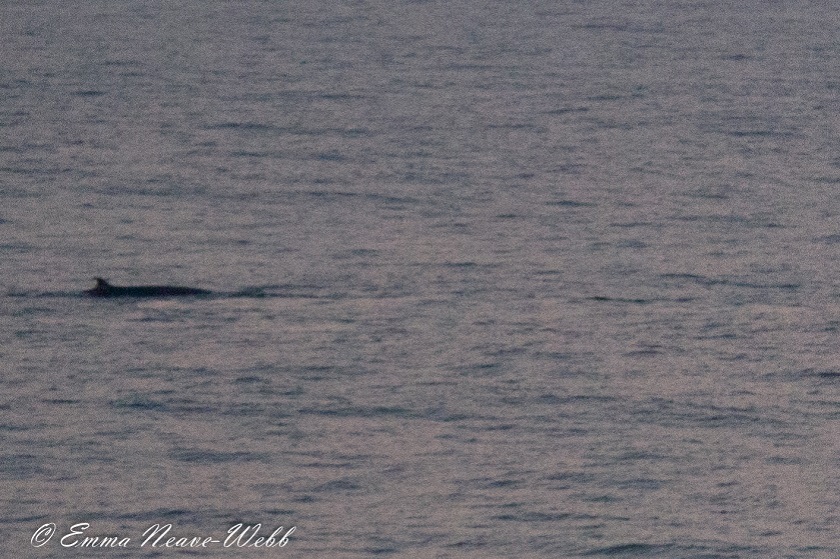
Just as the sky started to turn golden, we were treated to our only beaked whale sighting of the afternoon with two Cuvier’s Beaked Whale surfacing around halfway to the horizon before quickly disappearing back into the depths – beaked whales truly are a frustrating group of whales at times! However, this wasn’t the last sighting at all as just as we were walking back from the bow to finish, our last cast of the day (thanks Richard – that phrase will stick with me forever now!) found us a Fin Whale followed by around 40 Short-beaked Common Dolphin racing in to the ship!
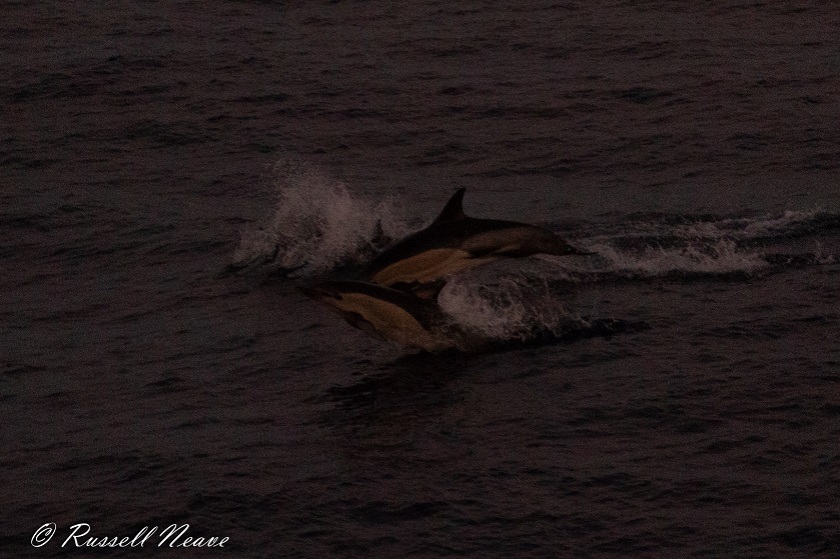
A wonderful afternoon capped by a beautiful sunset – 8 species in 4 hours is not a bad record at all!

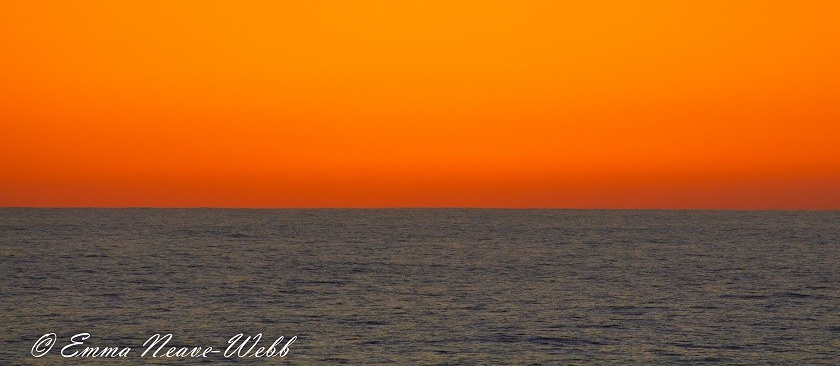




Fab blogs Emma. There is so much to discover in that area. You feel a bit like a pioneer as you travel through it. Cheers Jeff
LikeLike